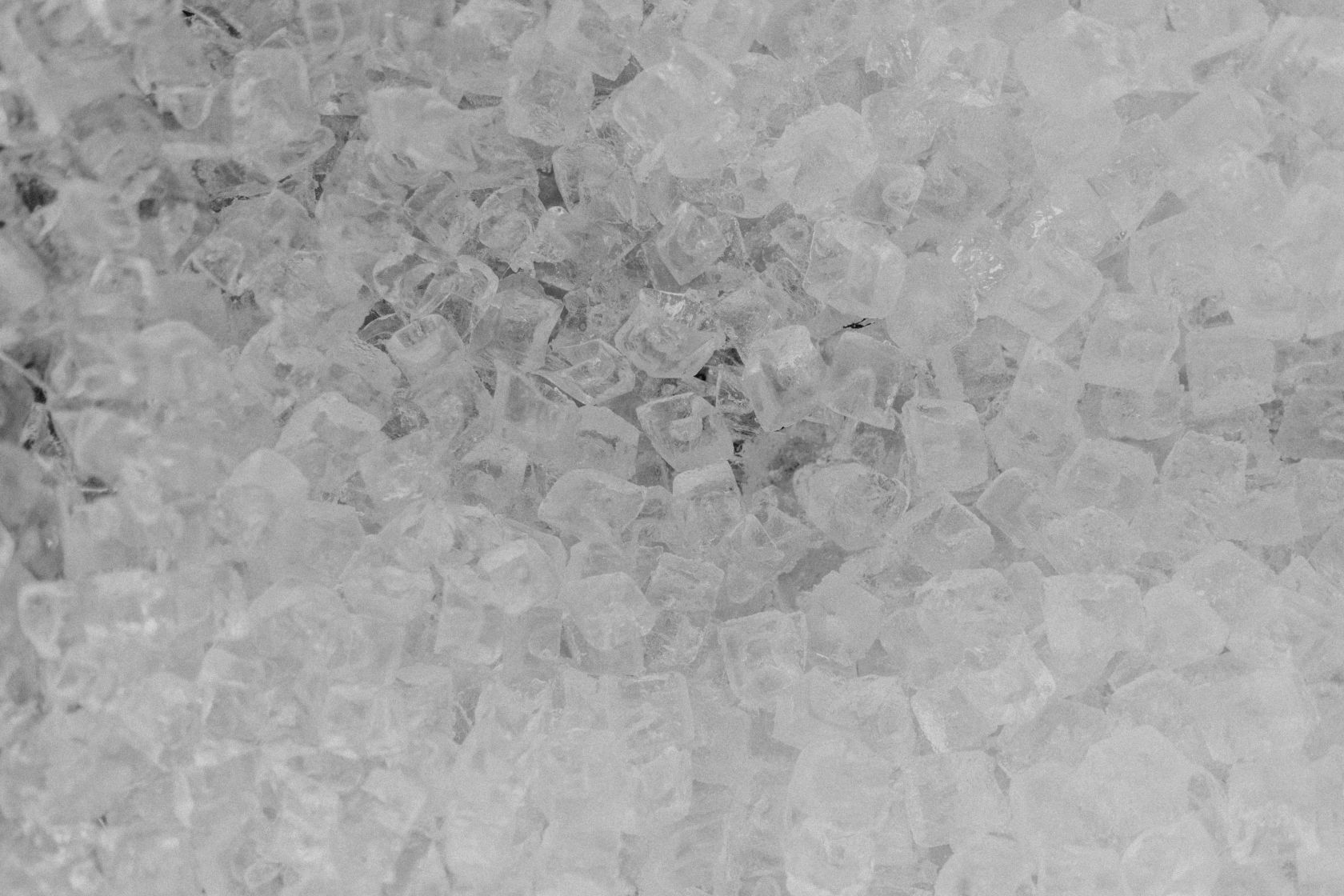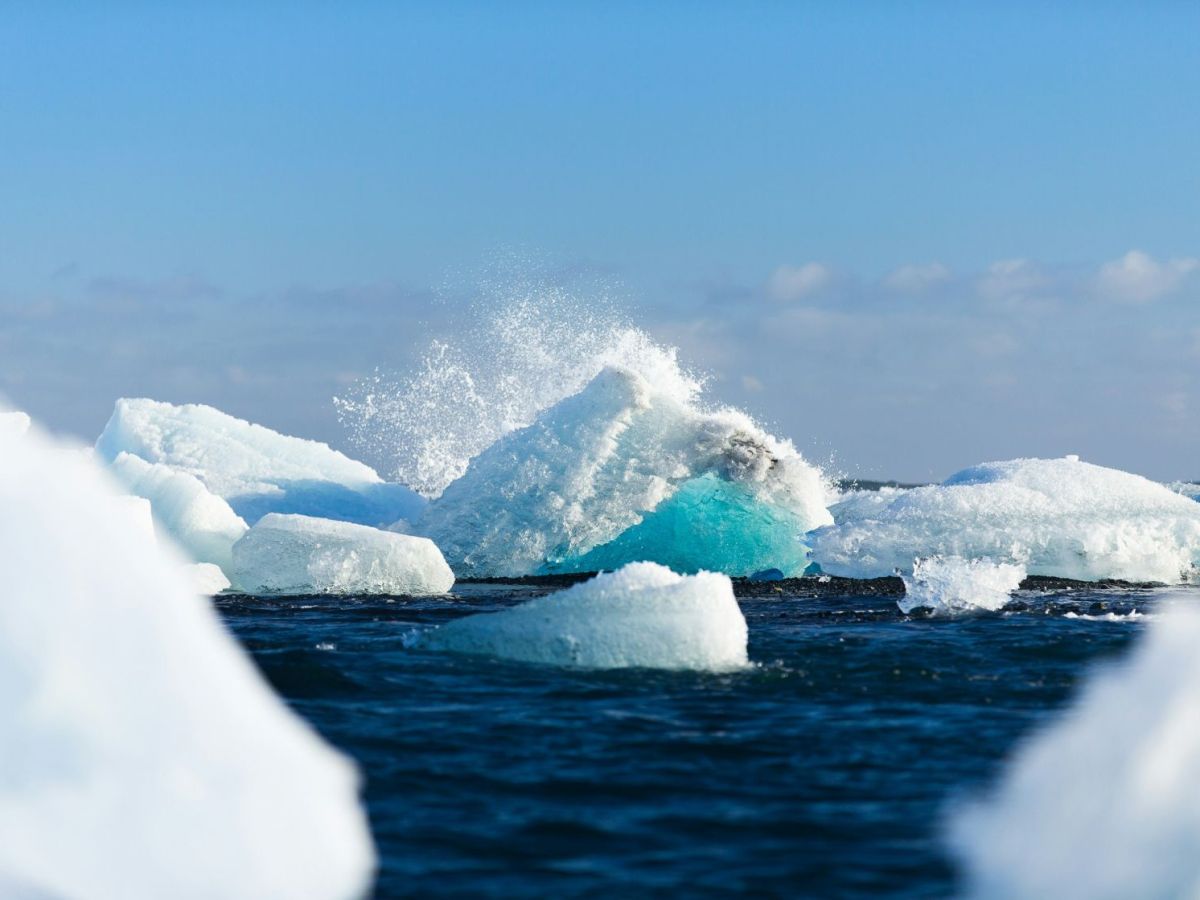We all know what ice is; we chuck it in a drink to cool it, and it makes that satisfying crackly sound when you first add it.
We know ice is formed when water gets so cold it freezes, typically at or below 0°C, and liquid water or water vapour causes water molecules to slow and form a solid structure. Iceland has a good share of it, but it doesn’t look like the ice you put in your glass, does it? Glacial ice appears different from the ice in your home freezer due to years of compacted snow, and contains trapped air bubbles, dust and other materials. Sea ice is different again, formed in salty ocean water and has a different salinity and structure; older ice is often denser and has a different crystal structure.
Different types of ice
Water does all sorts of weird things when it freezes, making different structures depending on temperature and pressure. Common ice types used for cooling include cube ice, nugget ice, and flake ice, each with different properties and uses. The smaller surface area of a large block of ice will take longer to melt than a lot of small cubes, making it useful for industrial cooling – or even ice sculpting. Flaked or crushed ice might be found in restaurants to keep food fresh, and crushed ice can be found in some cocktails, where fast melting can also help to slightly dilute and balance the flavours.
Slushies use crushed ice
Do you know how these came about? The first slushie machine was invented by Omar Knedlik, the owner of a Dairy Queen franchise in the USA. The soda machine in his restaurant experienced constant issues, and sometime in 1958, it failed completely, so he decided to store his soda in his freezer. Unfortunately (or fortunately for him), it became slushy when taken out, so he decided to sell the slush as a new drink to his customers, and it soon became popular.
The ‘slushie’ machines we see today use concentrated flavour syrups mixed with filtered water, which is then injected into a cylinder surrounded by freezer coils. The mixture freezes to the wall of the cylinder, but is constantly scraped off by a rotating dasher, which keeps the mixture uniformly mixed. The combination of pressure, the sugar and constant stirring prevents the mass from freezing solid.

Home-made v Commercially made
The ice you make in the freezer is often cloudy rather than totally clear, and this is typically caused by dissolved minerals and trapped air in the water, which are more prevalent when water freezes quickly. Commercially made ice machines have built-in water filtration, where the water is rapidly frozen in progressive layers of ultra-thin sheets. The process prevents air bubbles from becoming trapped in the cubes, and the end result is beautifully clear ice. ‘Gourmet ice’ comes with a unique octagonal or cylindrical shape, featuring a solid build and an almost 100% ice-to-water ratio, very often having a hole through the middle, all due to the freezing mechanism used.
Polar bears are losing it
They prefer miles of a thick, stable old sea-ice—for protective cover and for somewhere to hunt for food. During the summer, they eat very little while they wait for the ocean to re-freeze, but due to the ice melting more quickly these days, polar bears are moving to land on the north coast of Alaska, where ice no longer connects to shore. This separates the bears from their preferred hunting grounds, and with less ice, polar bears can’t find food so easily. Scientists predict that polar bears could face extinction by the end of the 21st century if greenhouse gas emissions continue to melt the ice at its current rate.
Argh - Brain Freeze!
When something ultra-cold hits the roof of your mouth or the back of your throat, it causes blood vessels in the area to narrow and then quickly widen. This is sensed by nerve cells, and the brain interprets this as pain, often felt in the forehead, nasal passages or temples. It even has a medical term - Sphenopalatine ganglioneuralgia. Fortunately, it’s only temporary!











